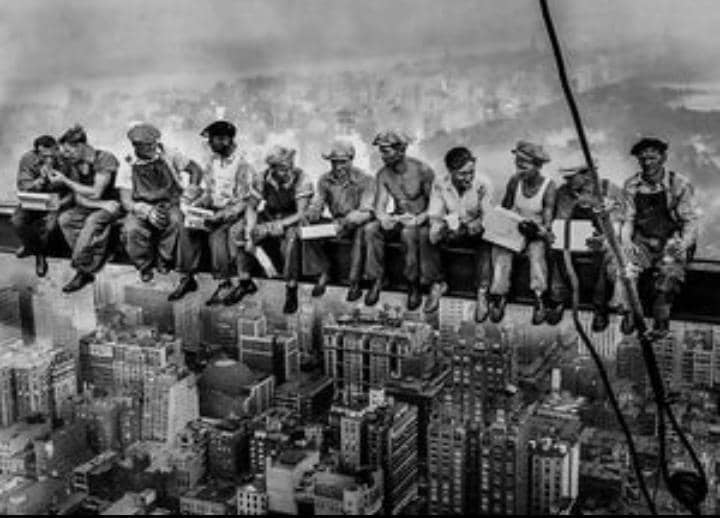The iconic photograph Lunch atop a Skyscraper, taken in 1932, captures eleven ironworkers casually eating lunch while perched on a steel beam, 850 feet above New York City. This image, often attributed to Charles C. Ebbets, symbolizes the resilience and determination of American workers during the Great Depression.
Originally published in the New York Herald-Tribune on October 2, 1932, it has become a representation of the American industrial boom and the immigrant labor force that built the nation’s skyscrapers.
The photograph was staged as a publicity stunt during the construction of the RCA Building, now known as 30 Rockefeller Plaza. It showcases the bravery of these ironworkers, many of whom were immigrants from Ireland, Italy, and other countries, who were accustomed to working at great heights.
The image not only highlights their physical courage but also reflects the broader narrative of the American Dream, where hard work and determination could lead to success.
Over the years, the identities of the men in the photograph have sparked curiosity and debate. While only a few have been definitively identified, the search for their stories continues.
The 2012 documentary Men at Lunch delves into the lives of these workers, revealing the challenges they faced and their contributions to the construction of iconic structures in New York City.
In a modern twist, Rockefeller Center has introduced an interactive experience called “The Beam,” allowing visitors to recreate the famous photograph. This attraction offers a safe way for guests to experience the thrill of sitting on a steel beam, elevated above the observation deck, while enjoying breathtaking views of the city.
This blend of history and modernity serves to keep the legacy of these ironworkers alive.
The enduring appeal of Lunch atop a Skyscraper lies in its ability to connect generations to the past. It stands as a testament to the hard work and sacrifices of the men who built New York City, reminding us of the rich tapestry of immigrant contributions that shaped the skyline and the American identity.

